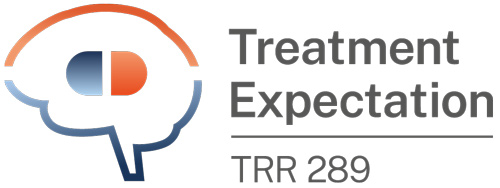© istock.com/imaginima
Our vision
The collaborative research centre "Treatment Expectation" and our research methods are designed to be multidimensional, multilayered and complex in order to find valid answers to the crucial question: How do positive and negative patient expectations affect treatment outcomes?
Our vision is clear
We must have a clear understanding of the mechanisms of expectation effects. Only with this information will we be able to incorporate patient expectations into treatments in a meaningful and targeted way, and thereby extend the range of treatment options in the long term. We are convinced that our answers will help to deepen our understanding of health, disease and treatment. Our results will also play an important role in the development of new medications and in communication between patients and treatment providers, as the ultimate objective of everyone involved in research and treatment is always to develop more effective, tolerable and personalised treatments for the benefit of patients.
Tinctures and trust
Placebos have been an important tool for healers throughout human history: tinctures, wraps and herbal extracts were combined with specific rituals to ease suffering. Hope and trust have always been inextricably linked with healing. Around 400 years before Christ, the Greek philosopher Plato already knew that such effects could significantly improve the efficacy of medical treatments. In his dialogues, when Charmides asked Socrates whether he knew "a cure for the headache", he received a clear answer: "… that it was a kind of leaf, which required to be accompanied by a charm, and if a person would repeat the charm at the same time that he used the cure, he would be made whole; but that without the charm the leaf would be of no avail."
Communication and context have been essential elements of medical treatment since ancient times, but with the discovery of antibiotics at the beginning of the twentieth century, the range of treatment options grew immensely. Increasing biomedical research helped medicine to achieve the great treatment successes from which patients benefit today, though this was accompanied by a strong focus on clear physiological mechanisms. In this phase of research, which lasted into the 1970s, context, communication and expectations were considered rather trivial and often even ridiculed.
New discoveries
But then the realisation that the human body is a highly interconnected organism in which messengers, cells, tissue and organs are continuously interacting became increasingly important. Everything should be viewed as the result of control circuits and feedback systems. Nothing can be considered in isolation.
Nevertheless, fundamental questions remained unanswered: Which biochemical mechanisms, which messengers and receptors, influence treatment expectation in which parts of the brain and body? How do these signalling pathways interact with medications to produce an increase or decrease in their efficacy? Which conditions help to reduce the side effects of medication?
Imaging techniques, such as functional magnetic resonance imaging and positron emission tomography, neurophysiological methods and sophisticated standardised study designs now enable complex psychoneurobiological phenomena to be explained.
Cutting-edge international research
Germany is at the forefront of international research on placebo and expectation effects. The German Research Foundation has funded many projects in recent years and these now include the collaborative research centre "Treatment Expectation". Our objective is to unlock the extremely complex mechanisms of expectation effects from molecular to systemic level using the latest scientific methods, to understand psychological and neurobiological differences between individual patients and diseases as clearly as possible and to examine how these effects can be used to optimise established pharmacological and other treatment approaches. From there we aim to develop specific treatment options. That is our vision.
